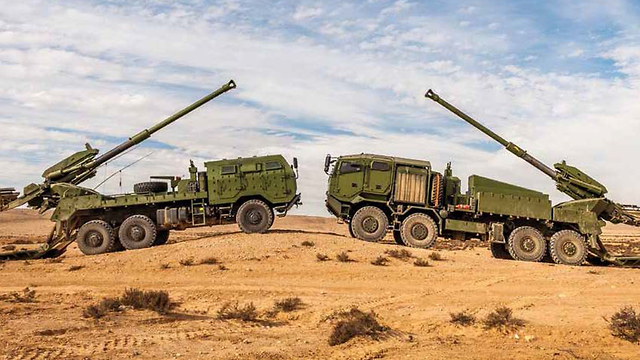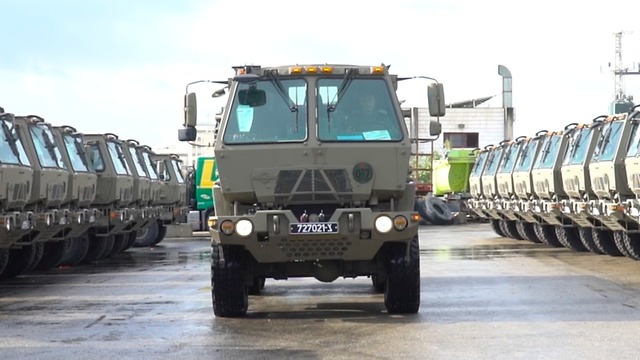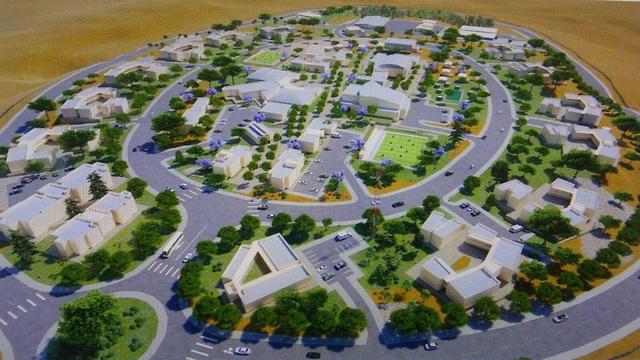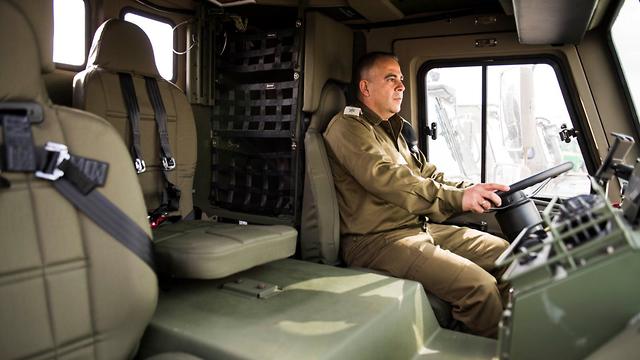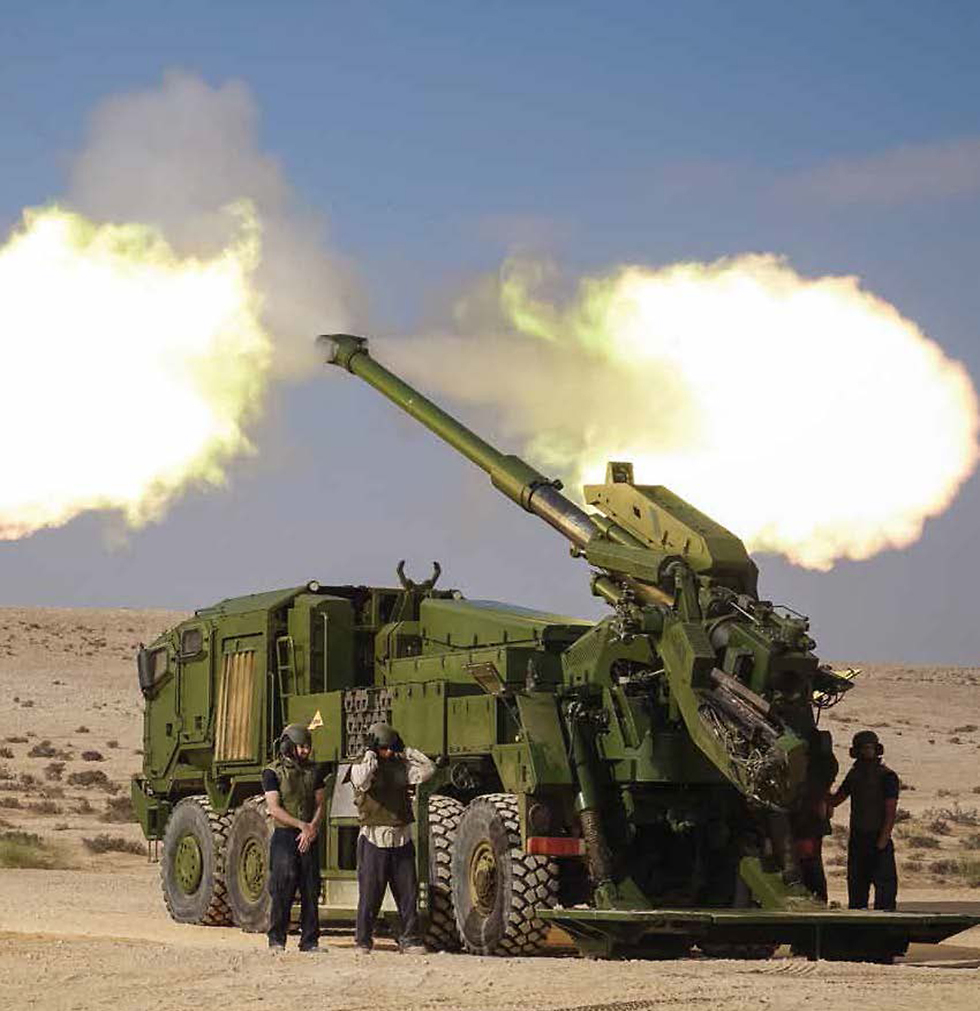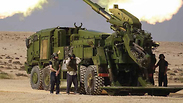
The US is providing Israel with $38 billion in military aid over a decade, in one the final acts of international diplomacy by former US president Barack Obama. And as with most American military aid to Israel, the lion’s share is earmarked for further strengthening the Air Force — supplying the driving force of Israel's military might with new jets and precision armaments.
The IDF Ground Forces Command is hoping that its share, while small, will be enough to make major improvements, given reports of deficiencies and lack of readiness to fight a war, especially among reserve units. As the Air Force draws up wish-lists of cargo helicopters, fifth generation fighter-bombers, and new refueling tankers, the ground forces commanders are looking forward to new bases and new weaponry, albeit more modest in nature.
The Ground Force Command is expected to receive a several billion dollars to go to projects such as the establishment of the new training bases for the Nahal and Giva’ati brigades in the south, thousands of new vehicles for transporting weaponry and equipment during an emergency, radio and night vision equipment, and a new artillery cannon, developed by Elbit, to replace the one currently in use.
New bases for NIS 1 billion
Plans for rebuilding the IDF's two ageing infantry bases in the Negev were recently completed, and now hundreds of boxes are packed with enough architectural renderings and charts to fill three rooms. Tens of millions of shekels have been spent over the last two years on planning the new training bases for the Nahal Brigade, near Arad, and the Givati Brigade, in Ketziot, near the Egyptian border.
The plans were shipped to the US European Command base in Stuttgart, Germany to be examined by American engineering officers who will scrutinize each detail, from the piping and wiring to the electronic shooting ranges to the smart kitchens and green energy infrastructure that will power the bases.
The next quarter will be dedicated to an exchange of information and comments between the Israeli and American technology and logistics staff. Then, the Americans will issue a tender for contractors to build the bases, probably by Israelis under US supervision.
The new bases will be similar to the two previous infantry training bases constructed in the last two decades — one for the Golani Brigade, near Binyamina, and the other for the Paratroopers Brigade in Hevel Lachish. The core of the base includes all of its general command and utility services in close proximity: dining room, infirmary, classrooms, auditorium, sports facilities, pool, gym, simulators, parade grounds and command office.
Branching outwards from the center, in a bow or circle, are the living quarters of the recruits: huts, not tents, as in the older bases, with efficient heating and cooling, closet space for the occupants and water saving devices in the bathrooms and showers.
These bases directly implement a relatively new concept for the army, which will be decreasing as much as possible the time trainees spend on kitchen and guard duty. An automatic dish-washer will clean the dishes and pots, food will be served and collected rapidly, and the war room will have advanced observation systems designed to detect suspicious movements and differentiate between potential threats — whether someone is approaching the base in order to steal or simply walking by. This will save on the need to station manned guard posts.
The old Givati training base will be torn down and its replacement built nearby. The new Nahal training base will be partially erected on the grounds of the current base as some of its structures are worth saving. Construction is set to start at the beginning of the next decade and take about six years, at a budget of over one billion shekels.
The IDF’s fifth infantry brigade, Kfir, will not be receiving any American aid funds as its training base is located within the West Bank. The US conditions its aid money on being allocated only towards bases and military infrastructure not located beyond the Green Line, in land that is internationally disputed.
For that reason, the budget for bases in the West Bank and Golan Heights can only be drawn up in Israeli shekels. Nonetheless, the IDF announced that NIS 15 million has been allocated to improve the infrastructure of the Kfir Brigade training base.
Less walking
When the Americans constructed IDF bases in the past, such as Shizafon for the armored corps and Tzukei Uvdah for combat engineering, mainly after the withdrawal from the Sinai Peninsula in the early 1980s, construction was spread out over a large area and soldiers stationed in those bases have to walk large distances between facilities.
The IDF discovered that soldiers, who already endure increased physical exertion during their training, face additional unnecessary stress fractures due to the large distances they must walk to get around their base and solutions are being examined such as distributing bicycles to soldiers for use on base.
Made in the USA
The US stipulates that the aid money it provides can only be used to purchase equipment manufactured in the United States. In order to get around this hurdle, Israeli defense companies have opened up manufacturing lines on US soil.
Elbit Systems has come out with the ATMOS (Autonomous Truck Mounted howitzer System) artillery cannon that is set to replace the one currently being used by the IDF. It self-loads the 155 mm shells and is accurate over a range of 40 km. it is designed to be highly mobile and require less manpower to operate. The system is an improved model of an older Elbit cannon that, according to foreign sources, is in use among the militaries of Cameroon and Azerbaijan.
In addition to the artillery guns, the ground forces are also expected to acquire military cargo trucks and night vision equipment for front line units and tanks, especially in light of the fact that Hamas and Hezbollah terrorists now carry night vision gear.















